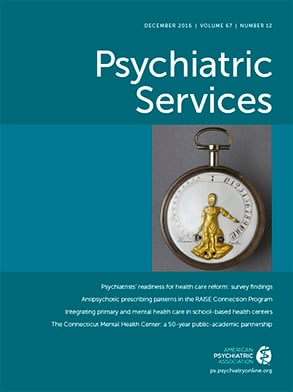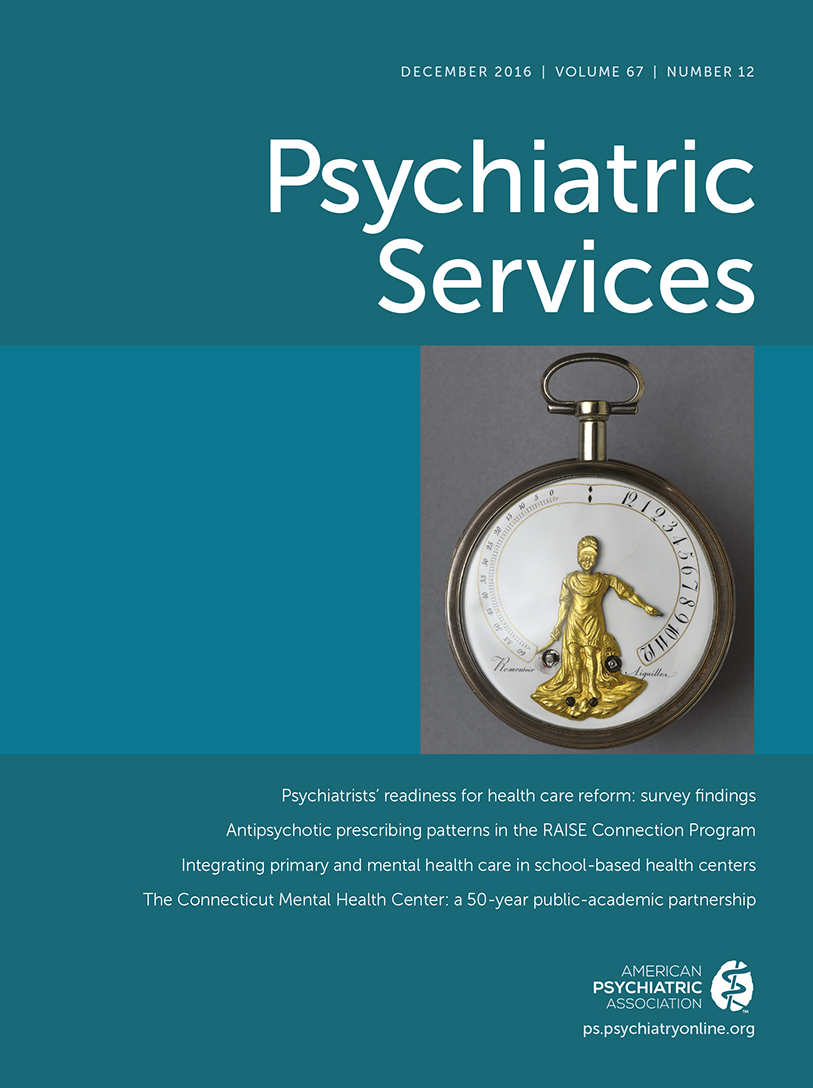White House Task Force report outlines steps to ensure parity compliance: The Mental Health and Substance Use Disorder Parity Task Force, established by President Obama in March 2016 and charged with ensuring parity protections to individuals with behavioral health disorders, has issued its final report. The report outlines actions to ensure better parity implementation; help consumers, providers, and plans understand parity; and strengthen oversight and enforcement of protections. The following are among the steps outlined. The Centers for Medicare and Medicaid Services will award $9.3 million to states to help insurance regulators ensure plans’ compliance under the law. Several federal agencies, including the Department of Health and Human Services and the Department of Labor (DOL) have launched the beta version of a parity Web site that directs consumers to appropriate federal or state agencies for filing complaints and appeals. With input from the public, site developers will add complaint- and data-tracking functionality. In addition, DOL will release annual data and report findings from closed parity investigations to improve compliance and inform policy-making efforts. The Substance Abuse and Mental Health Services Administration (SAMHSA) and DOL have released the
Consumer Guide to Disclosure Rights: Making the Most of Your Mental Health and Substance Use Disorder Benefits, which helps consumers and providers make informed inquiries about plan compliance and explains federal laws requiring disclosure of parity information. In addition, several federal agencies are partnering to develop guidance on parity and opioid use disorder treatment. The White House Task Force also asked Congress to increase funding for random parity audits of health plans, to permit the DOL to assess civil penalties against noncompliant plans, and to eliminate the ability of state-funded plans to opt out of parity requirements. The White House Press Office has posted a fact sheet with more information and a link to the full report (
https://www.whitehouse.gov/the-press-office/2016/10/27/fact-sheet-mental-health-and-substance-use-disorder-parity-task-force).
Medicare final rule increases payment for psychiatric collaborative care: The Centers for Medicare and Medicaid Services (CMS) has released a final rule on the 2017 Medicare Physicians’ Fee Schedule. The 2017 schedule sets forth an array of payment reforms to promote the transformation to value-based care. The final rule includes payments for psychiatric collaborative care management that are higher than in the rule originally proposed in August 2016. New codes will support payments to psychiatrists for consultative services that they provide to primary care physicians in the collaborative care model. The model involves care coordination between a psychiatric consultant or behavioral health specialist, a behavioral health care manager, and a primary care clinician. The model was developed by the late Wayne Katon, M.D., and Jürgen Unützer, M.D., M.P.H., at the AIMS Center of the University of Washington. It is the only evidence-based model of its kind and has proved effective in more than 80 randomized, controlled trials. It is estimated that the changes will result in $140 million in additional funding in 2017 to physicians and practitioners providing these collaborative services. More information is available on the CMS Web site (
https://www.cms.gov/Newsroom/MediaReleaseDatabase/Fact-sheets/2016-Fact-sheets-items/2016-11-02.html).
CIHS guide for primary care providers on integrated care for older adults: The number of Americans age 65 and older increased by 25% from 2003 to 2013, and an additional 50% increase is expected over the next 25 years. Many older adults have mental and substance use disorders that complicate treatment of their chronic general medical conditions. The Center for Integrated Health Solutions (CIHS) has published a guide to help prepare safety-net primary care providers to meet the unique behavioral health needs of older adults. Because of the shortage of specialty behavioral health providers, primary care organizations are adapting their systems and expanding their existing workforce skill sets to include behavioral health care. The 14-page guide,
Growing Older: Providing Integrated Care for an Aging Population, addresses special considerations for serving older adults within the framework of CIHS’s nine core workforce competencies for providing integrated care. The roles of community agencies that provide support to this population, such as Adult Protective Services, nutrition programs, and senior centers, are also described, and links are provided to dozens of publications and online resources. The guide is available on the SAMHSA site (
http://store.samhsa.gov/product/Growing-Older-Providing-Integrated-Care-for-An-Aging-Population/All-New-Products/SMA16-4982).
Kaiser Foundation analyzes data for 27 million uninsured Americans: Millions of Americans have gained coverage under the Affordable Care Act (ACA), and the uninsured rate has dropped to the lowest ever recorded. However, about 27 million nonelderly Americans still lack health insurance. Of these, 11.7 million (43%) are eligible for financial help under the ACA—about half through Medicaid expansion in their state (6.4 million) and half through tax credits to purchase insurance in ACA’s marketplace (5.3 million), according to an analysis by the Kaiser Family Foundation. Nearly a third of the uninsured population is outside the reach of the ACA, either because they are undocumented immigrants (5.4 million) or their state did not expand Medicaid (2.6 million). Some Americans are ineligible for financial help under the ACA because they have access to employer-sponsored insurance (4.5 million) or have an income above the limit for premium tax credits (3.0 million), although they could purchase unsubsidized marketplace coverage. The nine-page report and four technical appendices are available on the Kaiser Family Foundation Web site (
http://kff.org/uninsured). In a related analysis (
http://kff.org/disparities-policy), Kaiser authors found that the uninsured rate has fallen more steeply among people of color compared with whites. Findings for Hispanic Americans were especially striking. Between 2013 and 2015, the uninsured rate for Hispanics fell from 26% to 17%—a sharper decline than for any other group. Despite such gains, non-elderly Hispanics, blacks, and American Indians and Alaska Natives are more likely than whites to be uninsured, the analysis found.
New MHA state rankings highlight shortfalls in meeting Americans’ mental health needs: Mental Health America (MHA) has released its annual
State of Mental Health in America 2017 report, which ranks all 50 states and the District of Columbia on 15 mental health and access measures. The report cites research indicating that more than 40 million Americans are dealing with a mental health problem. Although health care reform has reduced the number of uninsured individuals, many Americans still lack any type of health insurance, and 56% of adults with a mental illness do not receive any treatment, according to the report. In addition, more than 1.2 million people with mental health conditions are in prisons or jails, with little access to treatment. Mental health problems among young people are increasing, and six of ten youths with major depression do not receive any treatment. In states with the smallest mental health workforces, there is only one mental health professional (psychiatrist, psychologist, social worker, counselor, or psychiatric nurse) per 1,000 individuals. In the overall ranking, Connecticut was first, and Nevada was 51st. Compared with the 2011 rankings, Wisconsin has fallen from eighth to 35th place and Indiana from 19th to 45th. States that have improved their ranking include Oklahoma (from 41st to 24th)—and New Mexico (from 44th to 22nd). The report is available on the MHA Web site (
http://www.mentalhealthamerica.net/download-2017-state-mental-health-america-report).
National Council advises ONDCP on the language of addiction: The National Council for Behavioral Health has submitted comments to the Office of National Drug Control Policy (ONDCP) on its draft guidance,
Changing the Language of Addiction. The ONDCP’s draft document is intended to advise federal agencies on terminology to use when discussing substance use and substance use disorders. Inappropriate terminology perpetuates negative stereotypes and creates barriers to treatment. The National Council supported use of person-first language that does not define an individual by any health condition or disability. It also supported classification of substance use disorders as a chronic disease requiring long-term treatment, often in multiple cycles, and singled out for support ONDCP’s clarification that medication-assisted treatment is an effective treatment that does not simply “trade one drug for another.” The council recommended avoidance of slang terms, such as “clean” or “dirty” to indicate drug screening results. It advised ONDCP to amend the document to make clear that addiction medicine is on par with other medical specialties and that clinicians use evidence-based cognitive, behavioral, and medication therapies to treat addictions. The council also advised ONDCP to expand the document’s “Person in Recovery” section to include stories highlighting that recovery is not based solely on abstinence but involves improved functioning across all sectors of a person’s life. More information is available on the Council’s Web site (
https://www.thenationalcouncil.org/capitol-connector/2016/11/national-council-submits-comments-changing-language-addiction).
NASHP’s primer on reducing opioid addiction in rural areas: Through a cooperative agreement with the Health Resources and Services Administration (HRSA), the National Academy for State Health Policy (NASHP) has developed a guide for state Medicaid officials and health care providers who are addressing opioid addiction in rural areas. Deaths and injuries from illegal opioid and heroin use are more prevalent in rural states, according to research cited in the primer, and deaths from opioid overdose are 45% higher in rural than in urban areas. Informed by interviews with key state Medicaid and HRSA-supported health safety-net leaders, the primer highlights strategies that states are using to better deploy emergency intervention to reduce opioid overdose deaths, improve access to care, and provide better services in rural areas. It also describes sustainable financing structures to support these strategies and services. Successful initiatives highlighted in the 28-page primer include authorizing first responders, pharmacists, and laypeople to administer and distribute naloxone to reduce overdose mortality; reducing barriers to medication-assisted treatments, such as methadone, naltrexone, and buprenorphine; and enhancing state telehealth infrastructure to improve treatment expertise among providers in rural communities.
Intervention, Treatment, and Prevention Strategies to Address Opioid Use Disorders in Rural Areas is available on the NASHP Web site (
http://nashp.org/intervention-treatment-and-prevention-strategies-to-address-opioid-use-disorders-in-rural-areas).
BJA introduces Police-Mental Health Collaboration Toolkit: The U.S. Department of Justice’s Bureau of Justice Assistance (BJA) has launched an online toolkit that supports law enforcement agencies around the country in planning and implementing public-safety responses to people who have mental illnesses. The Police–Mental Health Collaboration (PMHC) Toolkit, developed in partnership with the Council of State Governments Justice Center, describes best practices and provides resources to help law enforcement agencies partner with mental health providers to respond appropriately and safely to people with mental illnesses. The toolkit features programs in five jurisdictions—Portland, Maine; Madison, Wisconsin; Houston; Los Angeles; and Pasadena, California—and includes planning steps for police departments, written sample policies, and checklists for decision makers. For communities with existing PMHC programs, the toolkit offers tools, data, and procedures to manage the program and measure its performance. The PMHC Toolkit is available on the BJA Web site (
https://www.bja.gov/pmhc).

